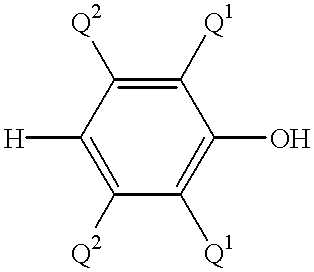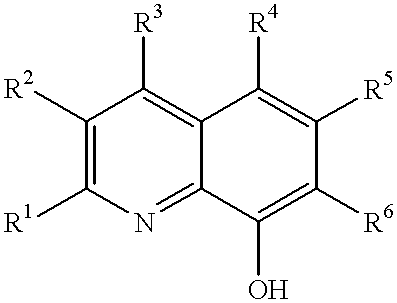Method of preparing a poly(arylene ether), and a poly(arylene ether) prepared thereby
a technology of arylene ether and arylene ether, which is applied in the field of preparing a poly (arylene ether) thereby, can solve the problems of not being readily and economically adaptable to a large-scale manufacturing facility, and achieve the effect of improving mixing and extraction efficiency
- Summary
- Abstract
- Description
- Claims
- Application Information
AI Technical Summary
Benefits of technology
Problems solved by technology
Method used
Image
Examples
examples 2-26
These examples illustrate the determination of cloud points for toluene solutions of poly(2,6-dimethyl-1,4-phenylene ether-co-2,3,6-trimethyl-1,4-phenylene ether) as a function of copolymer concentration, copolymer intrinsic viscosity, and copolymer composition. Copolymers having intrinsic viscosities of 35.3 mL / g to 41.6 mL / g, and 15, 18, and 21 weight percent of units derived from 2,3,6-trimethylphenol (TMP) were synthesized according to the procedure of Example 1. For a given copolymer solubility determination, an isolated poly(arylene ether) copolymer was dissolved at 10 to 30 weight percent in toluene at 90.degree. C. The temperature of the solution was decreased at a rate of about 1.degree. C. per minute and the temperature at which the first turbidity was observed was recorded as the cloud point, T.sub.cloud. Results are presented in Table 1.
[t1]
Using linear regression techniques, the data were used to generate the equation (I):
.o slashed..sub.s (0.30.+-.0.15)IV+(1.27.+-.0.31...
examples 27-34
These examples demonstrate the effect of pre-concentration temperature on the generation of fines (i.e., particles smaller than 38 micrometers) in a precipitated poly(arylene ether) copolymer. The method of Example 1 was used to prepare a poly(arylene ether) random copolymer having an intrinsic viscosity of 36.4 mL / g, and 18 weight percent of repeating units derived from TMP. A sample of the isolated powder copolymer was dissolved in toluene to generate a 36 weight percent solution. The precipitation was conducted batch-wise in a stirred vessel provided with a high shear mixer, operated at high rotating speed (7,500 rpm or 15,000 rpm) to achieve high shear mixing; at the start of the experiment, the anti-solvent was present in the vessel. The anti-solvent contained 94.9 weight percent methanol, 3.1 weight percent toluene, and 2.0 weight percent water. Then the poly (arylene ether) solution in toluene--at different solids concentrations as indicated in the table below--was added with...
PUM
| Property | Measurement | Unit |
|---|---|---|
| temperature | aaaaa | aaaaa |
| weight ratio | aaaaa | aaaaa |
| weight percent | aaaaa | aaaaa |
Abstract
Description
Claims
Application Information
 Login to View More
Login to View More - R&D
- Intellectual Property
- Life Sciences
- Materials
- Tech Scout
- Unparalleled Data Quality
- Higher Quality Content
- 60% Fewer Hallucinations
Browse by: Latest US Patents, China's latest patents, Technical Efficacy Thesaurus, Application Domain, Technology Topic, Popular Technical Reports.
© 2025 PatSnap. All rights reserved.Legal|Privacy policy|Modern Slavery Act Transparency Statement|Sitemap|About US| Contact US: help@patsnap.com



